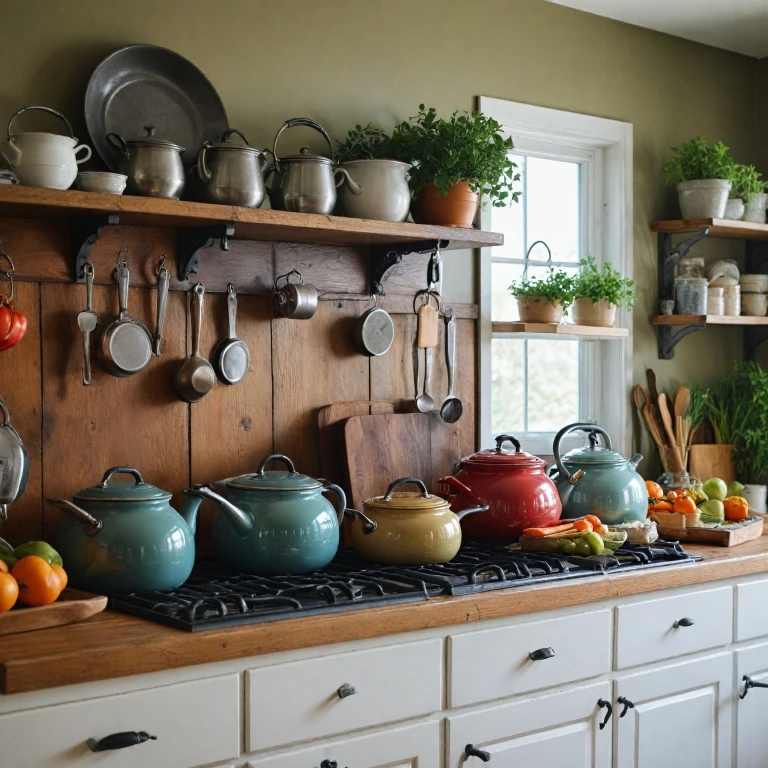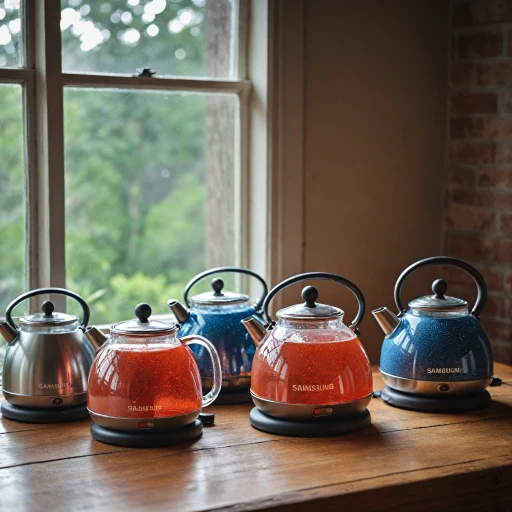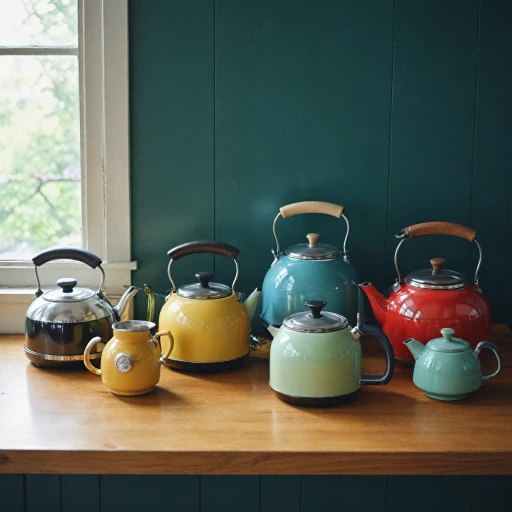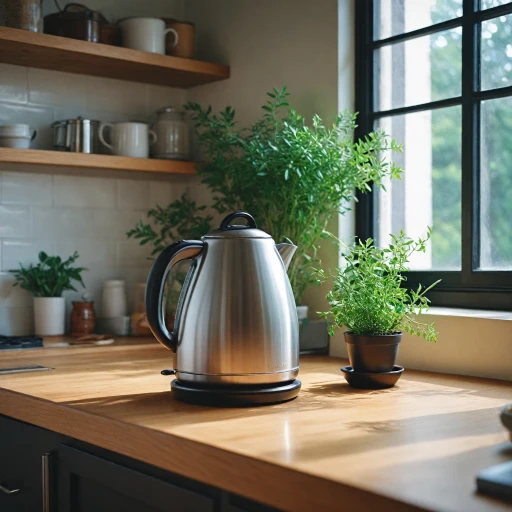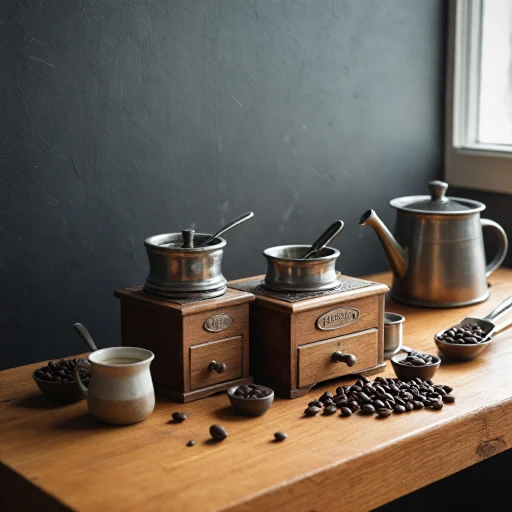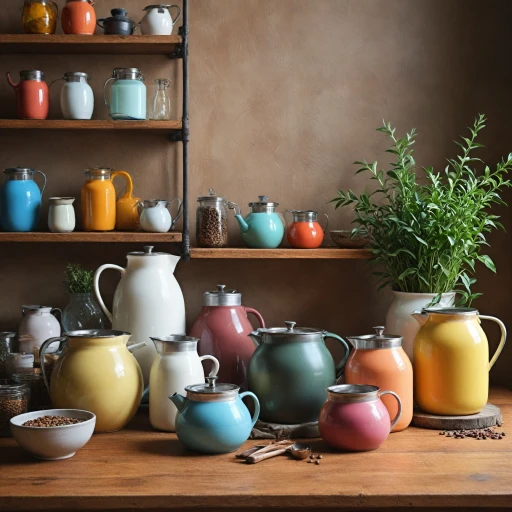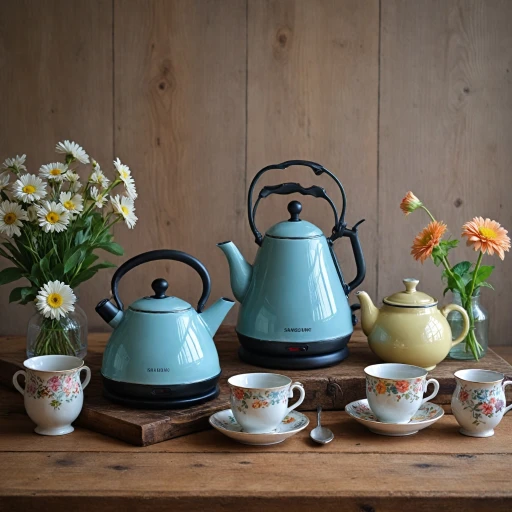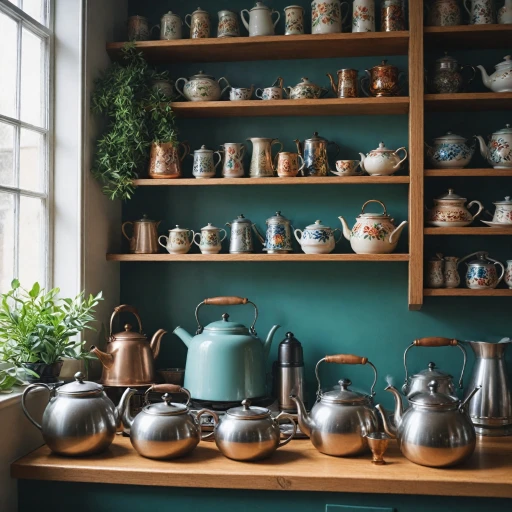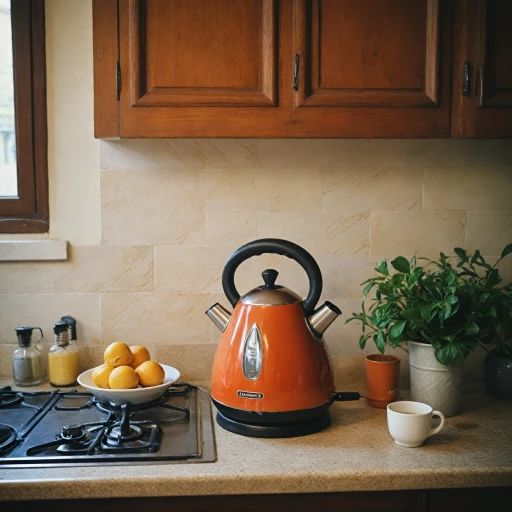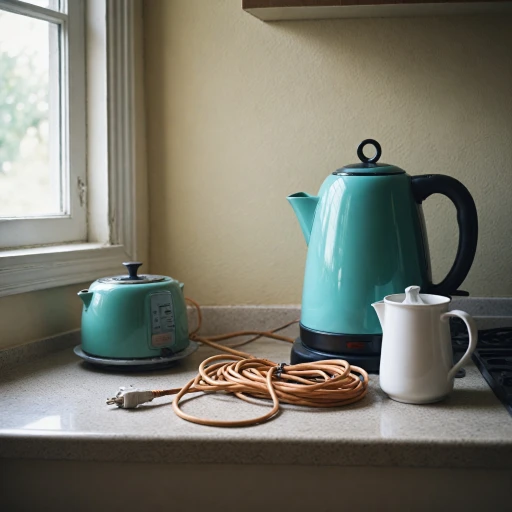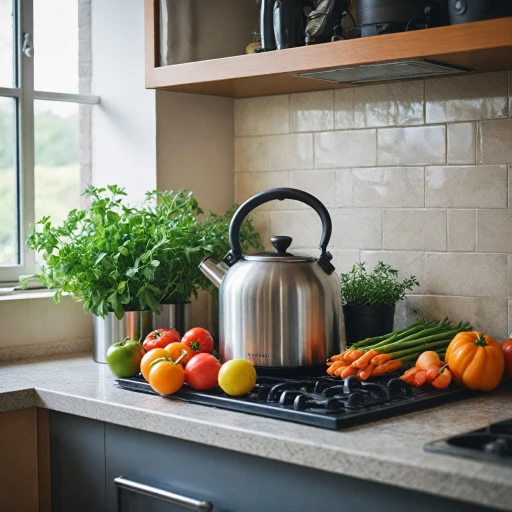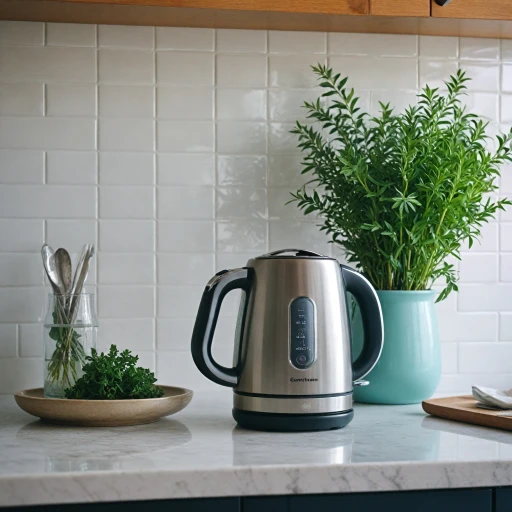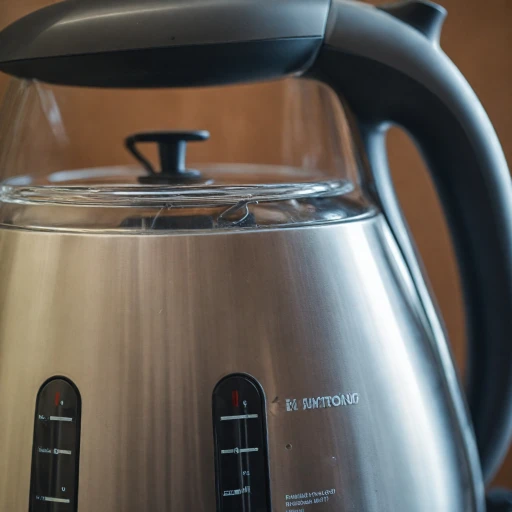
Understanding the Basics of Cooking Kettles
The Foundation of Culinary Efficiency
Cooking kettles have become a staple in modern kitchens, offering a range of benefits beyond the simple task of boiling water. Understanding these versatile appliances involves looking at their basic components and functionality. Cooking kettles are generally categorized into electric and stationary models. The electric kettle is renowned for its ease of use and efficiency, often preferred by those who appreciate convenience and speed. These appliances typically feature stainless steel construction, making them durable and easy to clean. Key components of a cooking kettle include the heating element, usually powered by electricity or gas, and a sturdy body, often made from stainless steel or food-grade materials. The lid plays a critical role in maintaining heat and steam inside the kettle, enhancing cooking efficiency. Many modern kettles come equipped with a keep-warm function, which is highly beneficial for maintaining the temperature of liquids like tea without constant reheating. Kettles vary in capacity, accommodating different needs from a simple cup of tea to large-scale food preparation for multiple servings. Some kettles are designed with a tilting function, allowing for easy pouring and eliminating the risk of spills, especially when dealing with full gallons of hot water or soup. Understanding these basics helps in making informed decisions about which product best fits specific needs, whether it's a countertop kettle for everyday use or a fully jacketed steam kettle for more intensive cooking. For those interested in canning and preservation, knowing the importance of specific components like a canning rack is crucial. This can greatly enhance the versatility of an electric kettle in the kitchen. Learn more about the importance of a canning rack in electric kettles here.Key Features to Look for in a Cooking Kettle
Essential Characteristics to Consider When Choosing a Cooking Kettle
When shopping for a cooking kettle, whether you're eyeing a versatile electric kettle or a more traditional option, a few key aspects should guide your decision:- Capacity and Size: Assess the amount of water or food you anticipate boiling. Countertop kettles often range from one liter to several gallons, so choose according to your needs. Larger models, like tilting or stationary kettles, offer increased volume for bigger batches.
- Material: Stainless steel is frequently favored for its durability and rust resistance in electric kettles. Make sure the kettle you select is food grade, especially for direct contact with consumables.
- Heat Source Compatibility: Electric kettles are typically powered by electric elements, but understanding the construction, like whether it’s fully jacketed or stationarily heated, can impact efficiency. Other options can include gas or direct steam variations for more industrial uses.
- Features: Many modern electric kettles boast features such as keep warm settings, BPA free materials, and tea infusers. These can significantly enhance usability for regular tea and food preparation.
- Lid Mechanism: A secure, easy-to-operate lid is vital to prevent spills and maintain safety. Look for models with efficient designs, whether you're considering a stovetop or electric variant.
- Convenience and Maintenance: Consider how easy it is to clean and maintain your kettle. A good electric kettle should be straightforward to disassemble for cleaning, with clear maintenance instructions.
- Price and Brand: Prices can significantly vary across brands available on platforms such as Amazon. While budget is essential, balance it with the quality and specific features you require.
Benefits of Using an Electric Cooking Kettle
Practical Perks of Electric Kettles
While conventional kettles still hold their place in kitchens, electric cooking kettles have emerged as a preferred choice for many home cooks. They offer unparalleled efficiency and convenience, making them an indispensable appliance.- Speed and Energy Efficiency: An electric kettle can bring water to a boil much faster than stovetop models. This efficiency not only saves time but also reduces energy consumption, offering a more sustainable cooking option.
- Temperature Control: Many electric kettles come equipped with temperature settings, allowing for precise control when preparing various foods or beverages like tea and coffee. This feature is especially advantageous when a specific temperature is crucial for taste and aroma.
- Convenience: Electric kettles often include features such as automatic shut-off and a 'keep warm' function, ensuring that your hot water is ready when you need it, without the risk of overboiling or burning.
- Safety Features: Designed with safety in mind, electric kettles come with auto shut-off capabilities and dry boil protection, making them a safe option for busy households.
- Versatility: These kettles can accommodate a variety of kitchen tasks, from boiling water and preparing tea to cooking ingredients such as eggs and pasta, as suggested in this comprehensive guide on choosing a safe and healthy model.
Comparing Different Types of Cooking Kettles
Choosing the Right Kettle for Your Needs
When it comes to cooking kettles, the variety available can be quite overwhelming. Whether you are looking for an electric kettle or a stove-top option, the choice often boils down to understanding the key differences among the various types. Understanding these differences can help you decide which kettle best meets your needs.
1. Electric Kettles
Electric kettles are a popular choice due to their convenience and speed. They can quickly boil water or prepare tea, and many models come equipped with a keep warm feature that maintains the water at the desired temperature. A stainless steel electric kettle is often favored for its durability and the BPA free construction potentially assures health-conscious users.
2. Kettles with Additional Features
- Capacity: While electric kettles often hold around 1 to 1.7 liters of water, larger capacity kettles such as a gallon sized electric hot water kettle are available, catering to larger gatherings or heavy tea drinkers.
- Tea Infuser: Some kettles come equipped with a built-in tea infuser, allowing you to brew loose leaf tea directly in the kettle.
3. Stove-top Kettles
For those who prefer a more traditional method, stove-top tea kettles offer a classic approach. Constructed from materials like stainless steel, they are used directly on the stove. These kettles are compatible with both gas and electric stoves, providing versatility for different cooking environments. A tilting lid can add extra convenience, allowing you to pour without removing it completely.
4. Commercial and Specialized Kettles
- Jacketed Stationary Kettles: Designed for commercial use, these kettles are often found in food service establishments. They use direct steam for efficient cooking of large quantities.
- Tilting Kettle: This type is also found in commercial kitchens and is favored for its ability to mix and cook food evenly and efficiently.
- Cleveland Range Kettles: Known for high quality and fully jacketed designs, these kettles are integral in large-scale cooking setups.
Choosing the right cooking kettle involves navigating through various types and features, making it essential to consider your specific needs and cooking habits. Whether you are selecting a countertop kettle for your home or investing in a high-capacity commercial model, each option offers distinct advantages that can elevate your culinary experience.
Maintenance Tips for Your Cooking Kettle
Maintaining Your Electric Kettle for Longevity
To ensure your electric kettle continues delivering optimal performance and remains a reliable kitchen companion, regular maintenance is key. Whether your kettle is stainless steel, a classic tea kettle, or a more sophisticated jacketed stationary model, proper care can prolong its life and functionality. Here’s how to maintain your cooking kettle effectively:
- Regular Cleaning: After using your kettle, it’s essential to clean it regularly. This prevents build-up of limescale, especially in areas with hard water. Consider using a mixture of vinegar and water to descale the kettle. Fill the kettle halfway with the solution, bring it to a boil, and then let it sit to dissolve any scale. Rinse thoroughly with fresh water.
- Addressing Residue: Any residue from cooking food can affect the kettle’s performance and even impact the taste of the food. Use a soft cloth and mild detergent to wipe down its surfaces, avoiding abrasive cleaners which may damage the material.
- Keep the Lid Clean: The lid of your kettle can accumulate dirt, especially if used frequently. Regularly remove and clean the lid, ensuring the steam valve (if applicable) is also checked for obstructions.
- Check the Components: Make sure to inspect electric components like cords and plugs for wear and tear. Safety is paramount when dealing with electrical appliances, and any damage should be addressed immediately.
- Storage Considerations: When not in use, store your kettle properly to prevent dents and other damage. Make sure it is dry before storing to prevent mold or corrosion.
- Using the “Keep Warm” Function: If your kettle comes with a keep warm feature, use it wisely to avoid overworking the appliance. This will prolong the life of the heating elements.
By regularly maintaining your kettle, whether electric, tilting, or stationary, you not only ensure its longevity but also safeguard the quality of your food and hot water preparations. In the market for a new kettle? Consider the product features that can ease maintenance in the long run.
Innovative Uses for Cooking Kettles Beyond Boiling Water
Beyond the Basics: Creative Culinary Uses for Cooking Kettles
In the world of kitchen appliances, cooking kettles stand out for their adaptability. While their primary function is to boil water, many users are surprised to discover the unconventional uses that these appliances offer. Let's explore some modern and practical ways to use cooking kettles beyond just making your daily tea or coffee.- Soup and Broth Preparation: The electric kettle serves as an excellent tool for preparing quick, warming soups or broths. Its efficient heating capabilities allow you to swiftly boil water. Add ingredients like noodles, vegetables, or even instant soup packets for a quick meal.
- Hard-Boiling Eggs: A kettle can be a great alternative to your stovetop for hard-boiling eggs. Simply fill the kettle with enough water to cover the eggs, bring it to a boil, and let the eggs sit with the lid on for about 12 minutes.
- Oatmeal and Porridge: For a fast breakfast, an electric kettle can heat water quickly for oatmeal or porridge. Both instant and traditional oats can benefit from the hot water, allowing for quicker preparation.
- Making Rice or Grains: Combine a stationary kettle's ability to rapidly boil water with its large capacity, and you've got an excellent method for starting rice or other grains. With precise water levels, it's easier to control the cooking process.
- Dehydrating Fruits or Vegetables: Believe it or not, some kettles, especially the larger, fully jacketed steam kettles, can be utilized in the dehydrating process. The steam helps maintain even temperature distribution for more effective drying.
- Melt Chocolate: Melting chocolate for baking or fondue is made easier with the controlled heat from a stainless steel kettle. Its compact size fits conveniently on your countertop, heating slowly and preventing burning.
